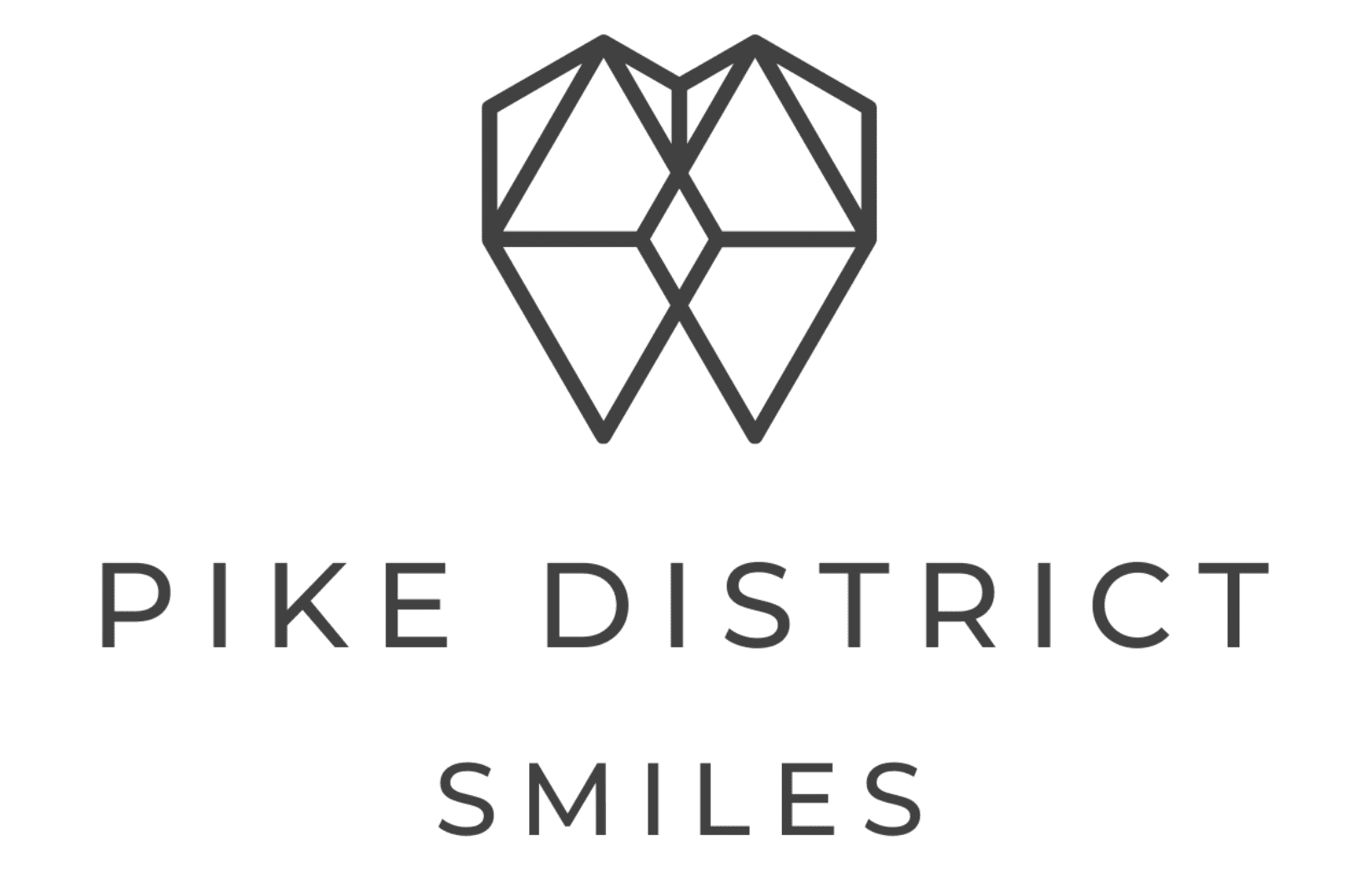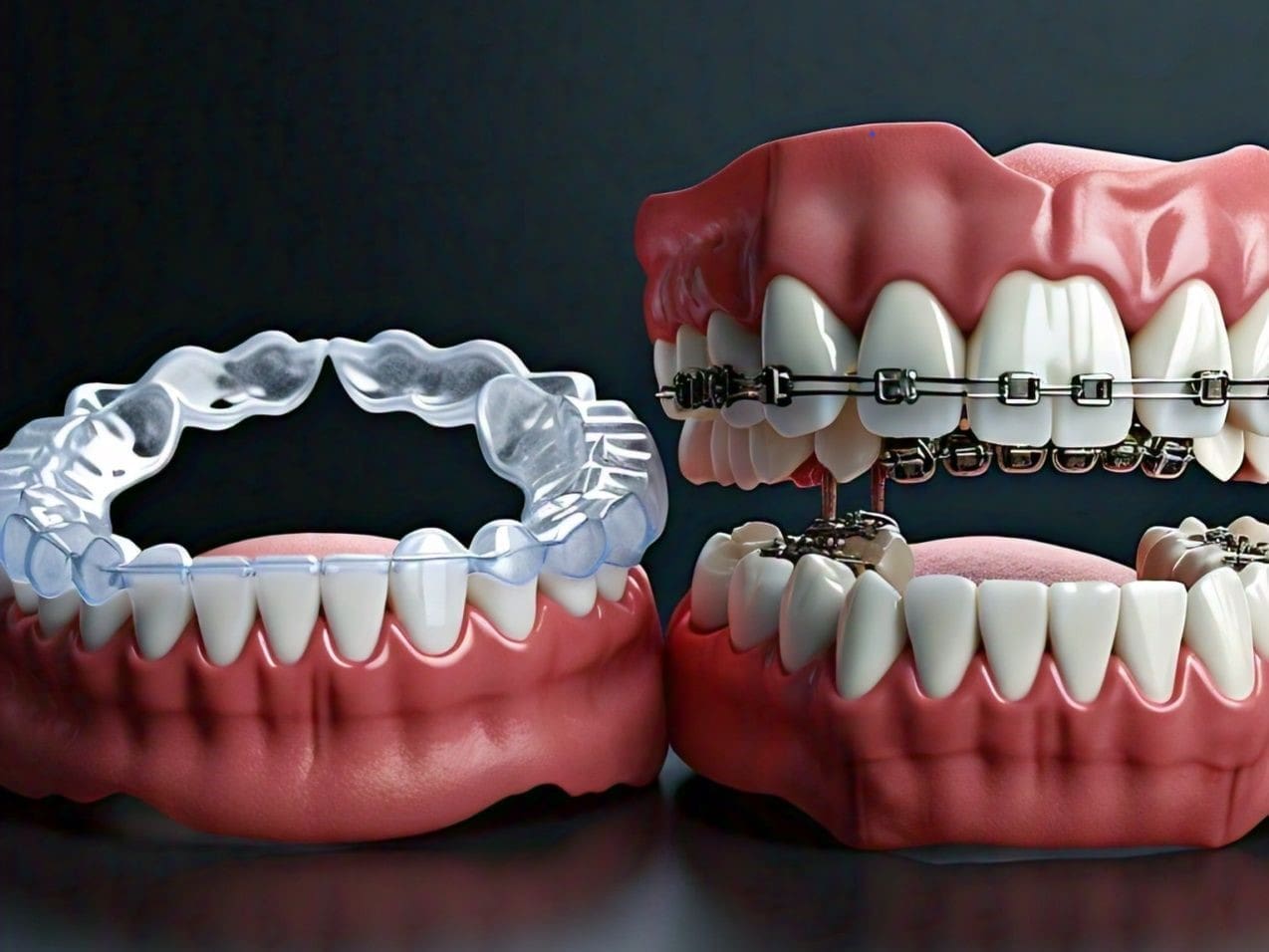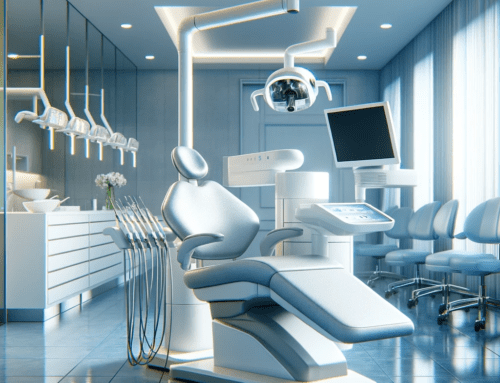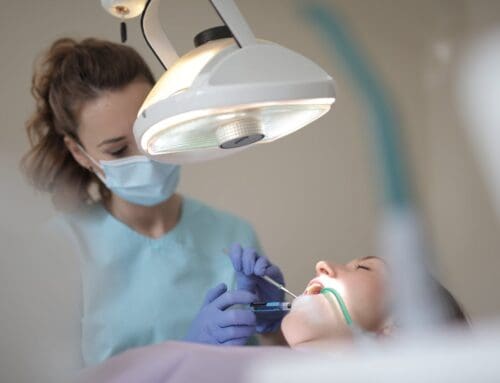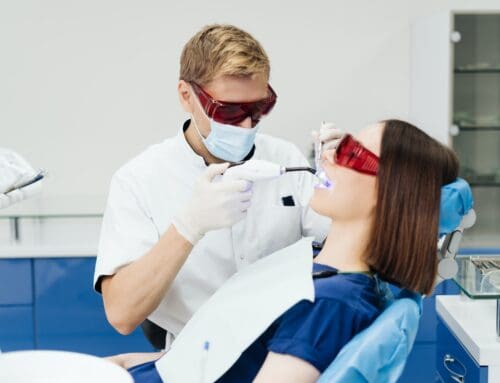Choosing between Invisalign and braces is a significant decision that impacts not only your dental care but also your daily life. Invisalign offers the convenience of being virtually invisible and removable, catering well to the lifestyle of adults and self-conscious teens who prioritize aesthetics and oral hygiene. On the other hand, braces are capable of correcting all types of orthodontic issues irrespective of their complexity, making them a robust choice for comprehensive dental correction.
Understanding the differences in treatment, including the Invisalign cost, treatment duration, and the discipline required for wearing aligners 20-22 hours a day, is crucial for making an informed decision. This guide aims to provide insights into both options, focusing on the benefits, costs, and considerations for choosing the right orthodontic treatment for you, ensuring a people-first approach to help you achieve the smile you’ve always wanted.
What Is Invisalign and How It Works
Invisalign aligners have earned their reputation for comfort and precision due to their unique SmartTrackTM material. Unlike traditional braces, these aligners are custom-fitted to each patient’s mouth, significantly reducing the risk of irritation. The process starts with a detailed 3D scan of your dental structure to create a personalized treatment plan. Over time, the aligners snugly fit over your teeth and actively move them into their desired positions.
The Invisalign Treatment Process
- Initial Consultation and 3D Scanning: Your journey starts with a consultation, where a 3D scan of your teeth is taken. This scan maps out a path to your new smile, avoiding the discomfort of conventional dental molds.
- Receiving Your Custom Aligners: After the scans, your first set of aligners is made. These are checked for fit and comfort by your doctor, ensuring they meet your needs perfectly.
- Regular Monitoring and Adjustments: Throughout the treatment, you’ll have regular check-ups to monitor progress. These appointments are crucial for receiving your next sets of aligners and making any necessary adjustments.
Invisalign’s system also includes features like the My Invisalign™ app, which allows you to track your treatment progress. After completing the treatment, a custom-made Vivera™ retainer ensures your teeth stay in place. This comprehensive approach not only enhances your oral hygiene, thanks to the removability of the aligners for daily routines like eating and brushing, but also shortens the treatment duration compared to traditional braces.
Benefits of Choosing Invisalign Over Traditional Braces
Aesthetics and Comfort
Invisalign aligners offer a distinct advantage in aesthetics as they are virtually invisible, making them an ideal choice for those who prefer a discreet orthodontic treatment. Unlike traditional metal braces, which are often visible and can detract from a person’s confidence to smile, Invisalign aligners are clear and hardly noticeable. This feature is particularly beneficial for adults and teenagers who are self-conscious about their appearance. Additionally, the smooth design of Invisalign aligners minimizes the discomfort often associated with the metal wires and brackets of traditional braces, enhancing the wearer’s comfort.
Enhanced Oral Hygiene and Dietary Freedom
One of the most significant benefits of choosing Invisalign over traditional braces is the improvement it offers in maintaining oral hygiene. The aligners are completely removable, which allows you to brush and floss your teeth with ease, reducing the risk of plaque buildup and gum disease. This removability also grants more dietary freedom. Traditional braces often restrict people from eating certain foods that could damage the braces or become trapped between the wires. Invisalign wearers can simply remove their aligners during meals, enjoying a wider variety of foods without such concerns.
Fewer Dental Appointments and Maintenance
Invisalign treatment typically requires fewer visits to the orthodontist compared to traditional braces. It is because Invisalign provides several sets of aligners ahead of time, each of which must be worn for a specific amount of time before proceeding with the next. This not only saves time but also reduces the inconvenience of frequent adjustments that are necessary with braces. Additionally, cleaning Invisalign aligners is straightforward and hassle-free, involving only regular rinsing and brushing, further contributing to their convenience and effectiveness in managing orthodontic corrections.
Understanding the Cost of Invisalign
Factors Influencing Invisalign Costs
- Complexity of Your Dental Case: The intricacy of your orthodontic needs significantly affects the price. Simple adjustments require fewer aligners and less treatment time, making them less costly compared to more complex issues that necessitate a longer treatment duration and more aligners.
- Length of Treatment: The duration your treatment will last also plays a crucial role in determining the cost. Longer treatment times involve more aligner sets and potentially more visits to your orthodontist, which can increase the overall cost.
- Geographic Location: Prices for Invisalign can vary widely depending on where you live. Typically, urban areas with higher living costs may also have higher rates for orthodontic services.
Insurance and Financial Assistance
- Dental Insurance Coverage: Many dental insurance plans contribute up to $3,000 towards orthodontic treatments like Invisalign. It’s essential to check with your insurance provider to understand the specifics of what your plan covers.
- Flexible Spending Accounts (FSA) and Health Savings Accounts (HSA): You can often use funds from FSAs or HSAs to pay for Invisalign, which can provide tax advantages.
- Financing Options: Several dental practices offer financing plans, allowing you to spread the cost of treatment over several months or even years. This can make managing the expenses easier without a significant upfront cost.
Cost Comparison with Traditional Braces
While the costs of Invisalign are generally comparable to traditional braces, the final amount can differ based on the specifics of your treatment plan. Invisalign offers a modern, less visible, and often more comfortable alternative to metal braces, with prices reflecting these advantages. However, for some complex dental issues, traditional braces might still be a more effective or economical option.
Conclusion
As we reflect on the comprehensive guide discussing the pros and cons of Invisalign versus braces, it’s clear that the choice hinges on individual needs, preferences, and orthodontic requirements. Whether it’s the aesthetic discretion and convenience offered by Invisalign or the robust corrective capability of traditional braces, each option has its unique benefits tailored to different lifestyles and dental goals. This exploration underscores the importance of a personalized approach to dental care, emphasizing the need to prioritize one’s comfort, lifestyle compatibility, and specific orthodontic needs in making an informed decision.
Recognizing the significance of professional guidance in navigating these choices, it’s vital to consult with a dental specialist who can offer tailored advice based on detailed examination and expertise.
